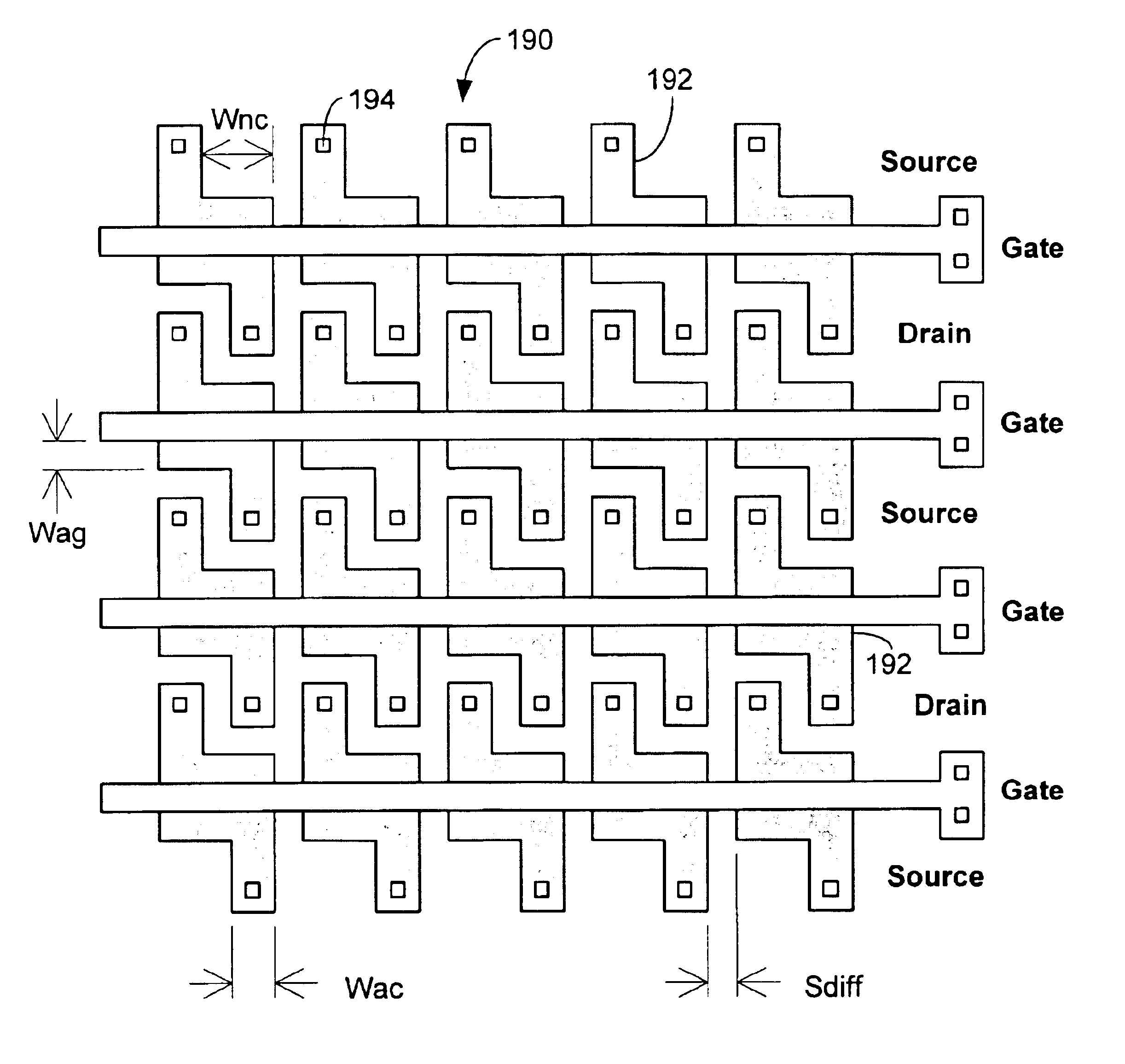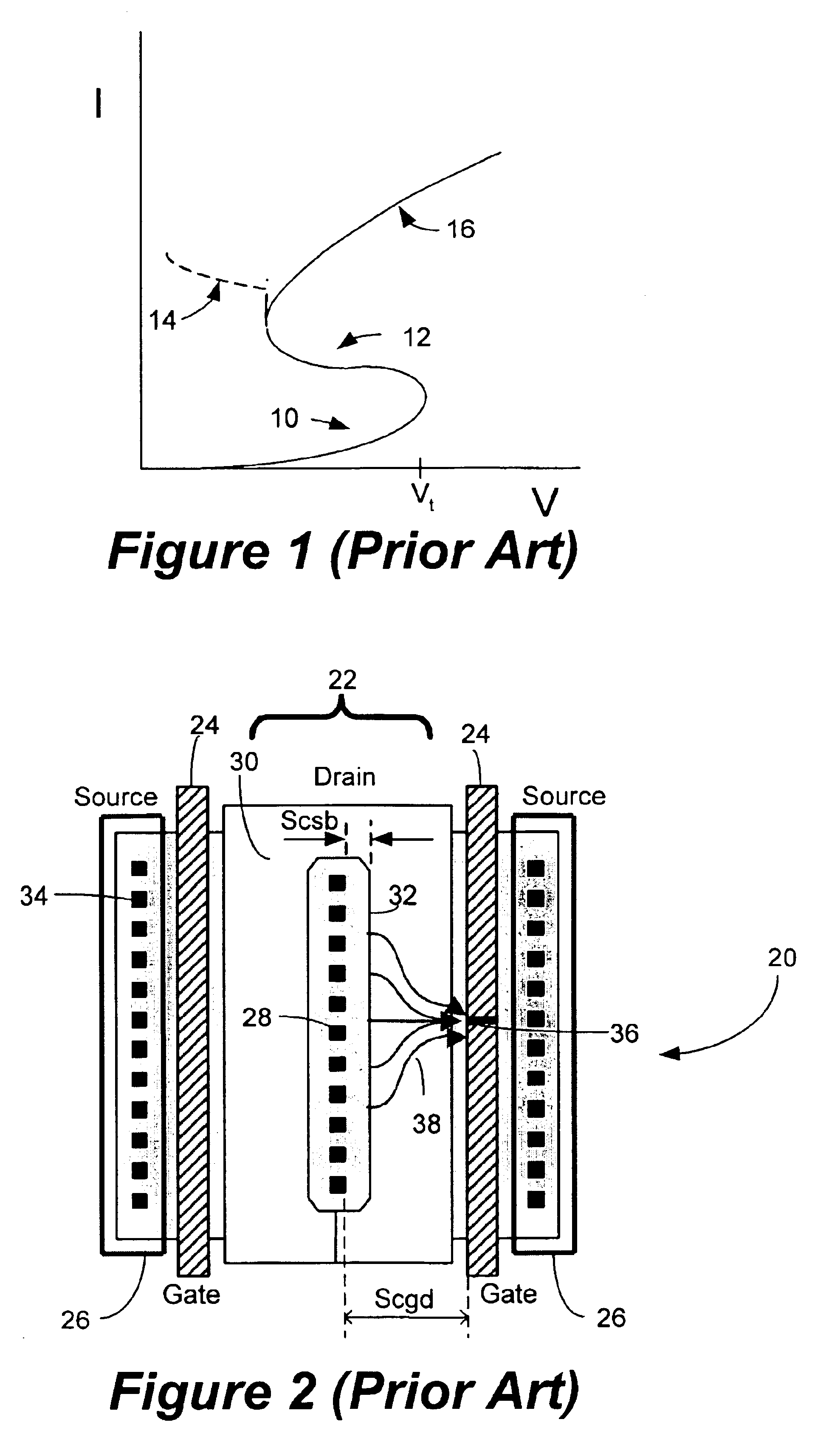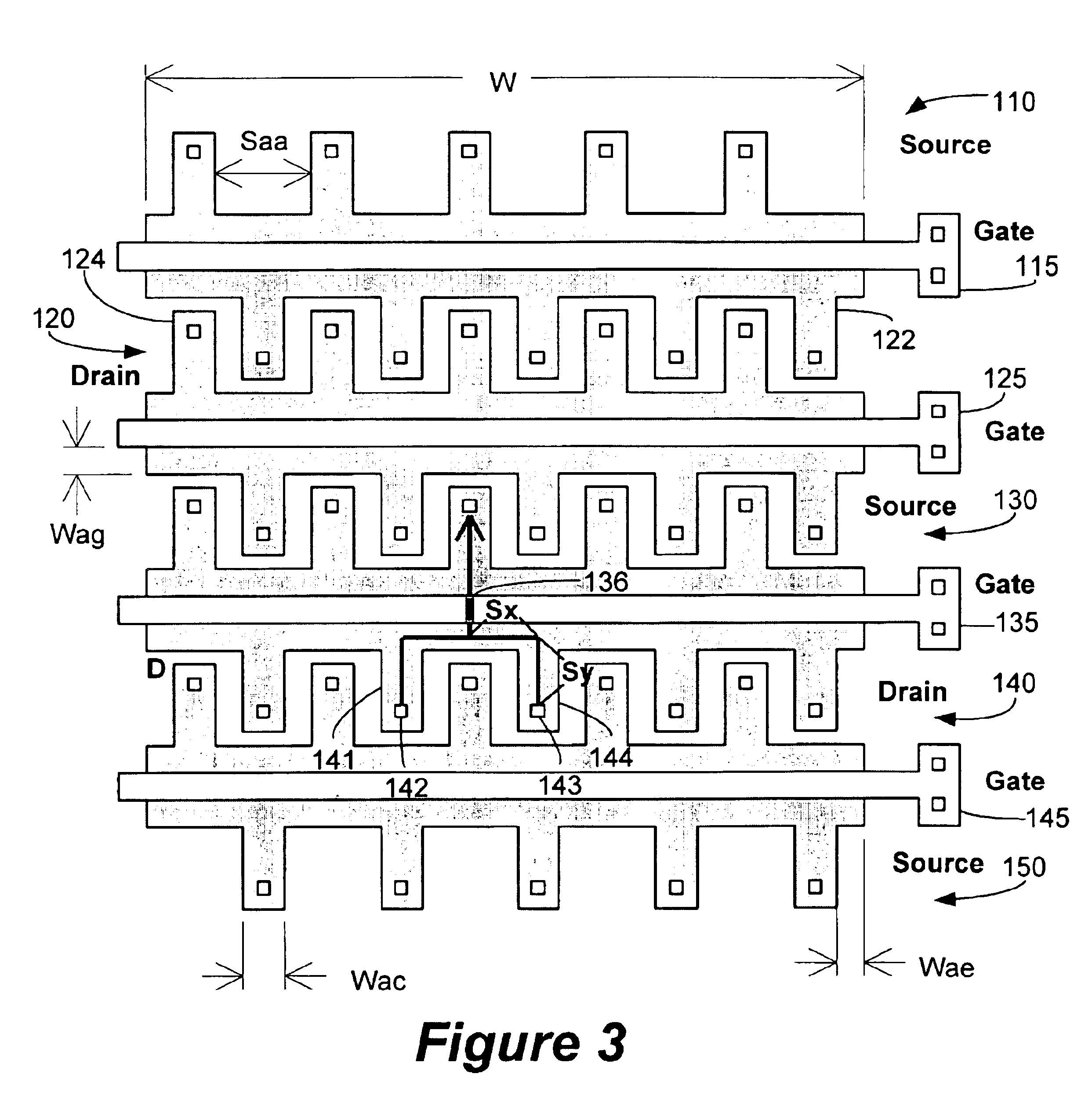Ballasting MOSFETs using staggered and segmented diffusion regions
a diffusion region and mosfet technology, applied in the field of mosfets, can solve the problems of metal opening, esd is a significant problem, integrated circuits (ics), etc., and achieve the effect of increasing the resistance seen by the hot spot filament, adding series resistance, and increasing the total resistance of the mos
- Summary
- Abstract
- Description
- Claims
- Application Information
AI Technical Summary
Benefits of technology
Problems solved by technology
Method used
Image
Examples
Embodiment Construction
[0026]The present invention provides an improved MOSFET-type ESD protection device in which resistance is added to the path that a hot spot filament current must take by requiring the current to flow both laterally and vertically in going from the drain contacts to the source contacts. This is achieved by segmenting the active or diffusion areas in both the drain and the source, and staggering the segments so that drain segments and contacts are not opposite source segments and contacts. Since the drain and source diffusion segments are offset (staggered), the filament current path is lengthened and includes lateral and vertical components, and the resistance seen by filament hot spots is accordingly increased.
[0027]One embodiment of the present invention is illustrated in FIG. 3. Multi-finger MOSFET device 100 includes gates 115, 125, 135 and 145, sources 110, 130 and 150, and drains 120 and 140. Hence, a first FET is defined by source 110, gate 115 and drain 120; a second FET is d...
PUM
 Login to View More
Login to View More Abstract
Description
Claims
Application Information
 Login to View More
Login to View More - R&D
- Intellectual Property
- Life Sciences
- Materials
- Tech Scout
- Unparalleled Data Quality
- Higher Quality Content
- 60% Fewer Hallucinations
Browse by: Latest US Patents, China's latest patents, Technical Efficacy Thesaurus, Application Domain, Technology Topic, Popular Technical Reports.
© 2025 PatSnap. All rights reserved.Legal|Privacy policy|Modern Slavery Act Transparency Statement|Sitemap|About US| Contact US: help@patsnap.com



